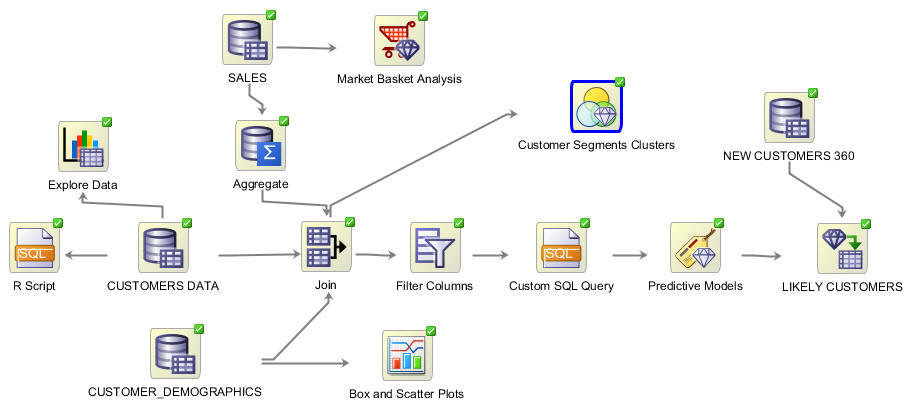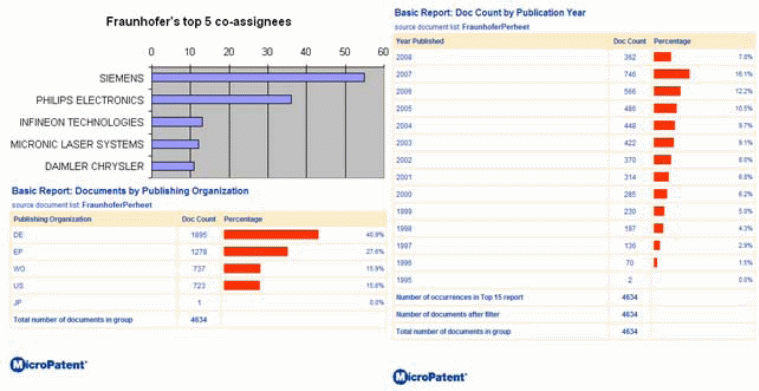Introduction
A substantial number of people in the contemporary society argue that technology is critical for transferring and sharing information. The argument comes from the fact that technology speeds up the pace at which information is either transferred from one source to another or the speed at which information can be accessed by different individuals (Taniar & Chen, 2011, p. 79).
Therefore, the role of information technology in the modern society cannot be overemphasized. However, there are a number of arguments that denote the demerits of information in information mining.
Such arguments are used to criticize the manner in which technology is used as far as the transfer of information is concerned. In this paper, it is argued that technology has resulted in efficiency and effectiveness in the performance of organizations by easing data mining.
This paper explores the essence of technology in information mining. The paper presents arguments from a dual perspective; the importance of technology is information mining and the hitches that are witnessed when it comes to deploying technology in information mining.
Overview of the technological revolution and information mining
The present society is highly characterized with transformation in information technology. Transformation in information technology is incremental in nature; it results in changes in modes of communication and information transfer through innovation and invention of information technology tools. The computer technology, which was developed many years ago, has resulted in a revolution in information technology.
It is important to note that computer technology keeps evolving, thereby providing newer and more sophisticated capabilities to retrieve and process data for the sake of coming up with sets of information that can be easily comprehended and elicit a positive move for organizations and individuals. The current society harbours more technology tools than any other time witnessed in the revolutionary history of the world.
Technology changes at a quick pace, meaning that more sophisticated forms of information technologies and technology tools are developed and render the prevailing tools and technologies outdated (Han, Kamber, & Pei, 2011, p. 3). There are different data mining tools that have been developed to help in manipulating data. An example is the Oracle Data Miner represented in the figure below.

It is critical to note that the idea behind development and continued innovation in information technology is to ease the pace at which people and organizations can access required data and process information. This is transferred to the target or destination through the same technology. Therefore, it becomes quite daunting for both individuals and organizations to access vital data and process information without technology.
Information processing aids in quickening the pace at which organizational functions are discharged, thereby enhancing organizational efficiency and effectiveness. Techniques of data mining and processing have been established, courtesy of the presence of technology and technology tools that are used as the main platform for processing and transfer of information.
The rudimentary forms of information mining were the main impediments to the enhancement of functions as they resulted in delays in extraction and processing data, which implied delays in the development of meaningful information.
It has become easy to retrieve and classify data from wider databases though the use of computer technology, thereby easing processing and provision of information to people (Han, Kamber, & Pei, 2011, p. 5).
Information technology and data mining
What comes to the mind when talking about technology in relation to information are the changes in the methods of information extraction from different databases and processing of the data in order to come up with meaningful information. All this falls under information mining.
It is important to note that the changes that have been witnessed in information technology have seen the adoption of modern and more efficient forms of data mining and processing as opposed to the old forms of information processing that were tiresome and inefficient.
Computer science is in itself a set of knowledge that enhances the capability of people to use computers and computer technologies for retrieving, transforming and classifying information using the available data. While such functions can be done without the use of computers, the pace at which it is done is quite low and can cause a lot of delays and inefficiencies.
Computer science has resulted in the development of efficient hardware and software technologies that aid in the gathering of data from wider databases. Statistical data algorithms and sophisticated data search engines have been developed, courtesy of the increased investment in the global information technology industry.
The algorithms and data search engines that are developed by the computer scientists help in discovering new meanings in the prevailing data through faster extraction of information from the large databases (Taniar & Chen, 2011, p. 78).
It is pleasing to see the diversity with which technology has been applied in different forms of organizations and departments, and how it helps to enhance the efficiency and effectiveness in terms of delivery and discharge of the functions and mandates of organizations. Technology has been highly deployed in companies to help foster business intelligence activities.
These activities revolve around access to business information by firms through acquisition and processing of important data that is related to business competition within and outside the industry in which firms operate (Adhikari & Rao, 2008).
Other organizations that have highly deployed technology in enhancing information mining include academic institutions, security and intelligence organizations and development agencies among others.
Most organizations are broadening their activities as part of the strategies of enhancing their competitive levels. Therefore, such organizations often have different databases that are distributed over different parts.
The multiplicity of databases results in the need for networking options to aid in the synthesis of data from the different databases. It becomes easy for these firms to access data from regional databases before processing the data to produce standard information that can be adopted by different subsidiaries. Different models have been developed in order to aid firms in exploring multiple databases (Adhikari & Rao, 2008, p. 61).
Education is one of the most vital resources in the modern society. It is imperative for governments to support educational institutions as a means of ensuring that the required skills in the market are attained. A substantial number of educational institutions in the world today have adopted different attributes of technology in fostering education (Osorio, Tatnall & Visscher, 2005, p. 3).
The trends of technology in education are evident in education research by academic institutions through deployment of data mining techniques. The other trend involves the direct deployment of technology in learning; for instance, the development of online academic programs and use of technology tools like the iPads, iPods, tablets, and laptops by students and teachers (McLester, 2008, p. 14).
Negative attributes of technology and information mining
One question that has been raised concerning deployment of technology in information mining concerns the ability to secure information using the digital technologies. Information security is vital, yet there are a lot of problems that have been witnessed by a substantial number of organizations due to the inability to secure information.
Part of the problems of security of information is the freedom to search and use information and the subsequent sharing of information by different parties. Even the mere presence of rules governing the privacy of information has proved to be inefficient in governing data mining (Lehdonvirta, 2010, p. 883).
The problem of data privacy and security is quite expansive owing to the sets of practices that are involved in the storage and flow of information using technology. It is quite daunting to establish and sustain trust between technology vendors and end users since the vendors and suppliers access all pieces of information that are transferred through the systems that they develop and supply to the users.
The wars between technology system suppliers and the users are quite prevalent in medical and other organizations where confidentiality is highly desired. Whether confidentiality can be guaranteed in such organizations is a question that attracts further research on the modalities of securing information (‘Supplier accused over data switch’, 2006, p. 16).
However, it is important to note that information scientists have been working on technologies that are critical in patenting or securing information, mostly information that is shared by different organizations on similar databases. An example is the VTT Data Mining Tools.

Conclusion
It is imperative to conclude that technology is important as far as transformation in data processing and information transfer is concerned. Going forward into the future, security, ease in data access and profiling are likely to be easier. However, this is likely to be equally accompanied by a lot of breaches in data access and transfer, thereby reducing the benefits of technology in data mining.
List of References
Adhikari, A & Rao, P 2008, ‘Synthesizing heavy association rules from different real data sources’, Pattern Recognition Letters, vol. 29, no. 1, pp. 59-71.
Han, J, Kamber, M, & Pei, J 2011, Data mining concepts and techniques, Elsevier Science, Burlington.
Lehdonvirta, V 2010, ‘Online spaces have material culture: goodbye to digital post-materialism and hello to virtual consumption’, Media, Culture & Society, vol. 32, no. 5, pp. 883-889.
McLester, S 2008, ‘Top 10 tech trends’, Technology & Learning, vol. 28, no. 6, pp. 14-18.
Oracle n.d,Oracle Data Mining. Web.
Osorio, J, Tatnall, A & Visscher, A 2005, Information technology and educational management in the knowledge society: IFIP TC3 WG3.7, 6th International Working Conference on Information Technology in Educational Management (ITEM), July 11-15, 2004, Las Palmas de Gran Canaria, Spain, Springer, New York, NY.
Ruotsalainen, L 2008, Data mining tools for technology and competitive intelligence. Web.
‘Supplier accused over data switch’ 2006, Pulse, vol. 66, no. 40, pp. 16-16.
Taniar, D & Chen, L 2011, Integrations of data warehousing, data mining and database technologies: innovative approaches, Information Science Reference, Hershey, PA.